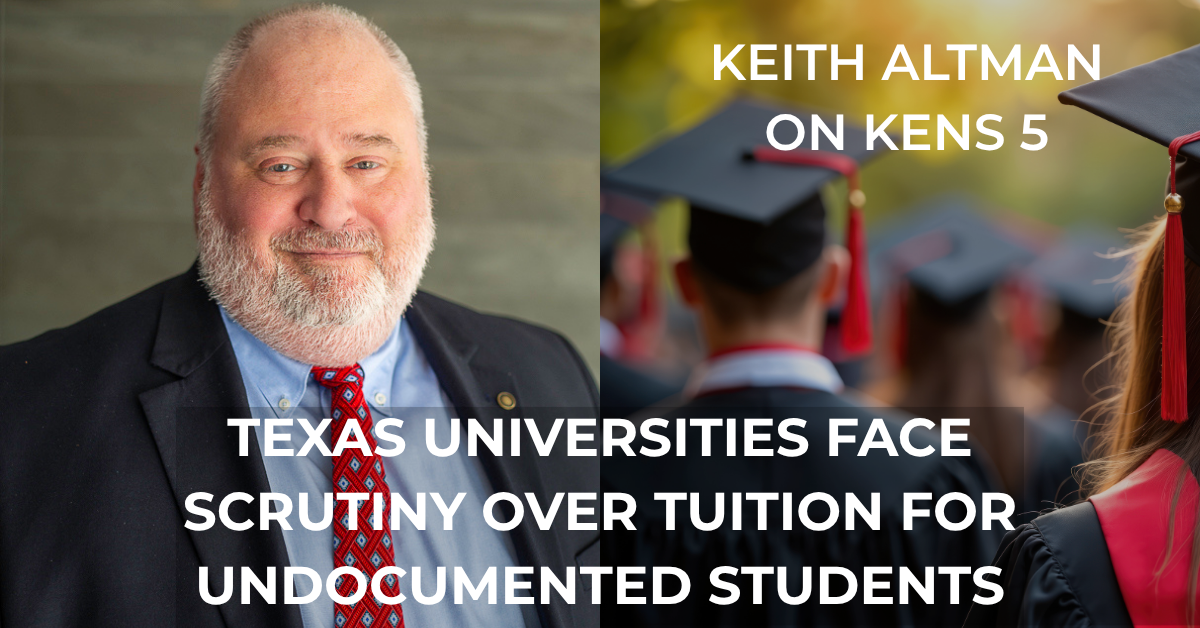A student filing a formal complaint of sexual harassment under Title IX marks the beginning of a critical process. Such a process ensures justice and maintains a safe educational environment. A resolution process has a structured approach that investigates allegations, determines responsibility and implements necessary actions to address the issue.
Title IX is pivotal in prohibiting sex-based discrimination in any education program with federal funding. All students regardless of their gender and equal access to educational opportunities, protecting them from violence and sexual harassment.
Whereas a Title IX Coordinator is responsible to oversee the procedure. They can guide the student through the complaint process to ensure a thorough investigation resulting in fair resolution. It is crucial to understand that the role of Title IX Coordinator is crucial to upload and support those who seek justice.
Dismissal of Complaints
Mandatory Dismissal
In some cases, if the charges don’t fit certain requirements, a formal Title IX complaint is rejected. When the behavior stated does not meet Title IX’s definition of sexual harassment, mandatory dismissal takes place. This includes instances where the alleged conduct:
- Did not take place during an activity or instructional program run by the institution.
- Did not happen to a person living in the US.
- Does not fit the definition of sexual harassment given by Title IX, which includes sexual assault, dating violence, domestic abuse, stalking, and quid pro quo harassment by a school employee.
Title IX Coordinator will conduct a thorough initial assessment for mandatory dismissal procedure. In case, allegation fails to meet the Title IX criteria, Coordinator is responsible to notify both the complainant and the respondent in writing. Reasons for dismissal are disclosed in the notice informing both parties of their right to appeal the decision.
Voluntary Dismissal
There are situations in which complaints may be voluntarily dismissed in addition to those that require dismissals. This may happen if:
- The complainant begs that the complaint be withdrawn in writing.
- The respondent is no longer a student or employee of the establishment.
- The school is unable to obtain enough information to make a decision due to certain circumstances.
Process of Voluntary Dismissal
The process begins with the complainant’s written request or identification of circumstances justifying dismissal. Both parties can challenge the dismissal decision – if they believe an error is made or in light of new evidence that can affect the outcome.
Review of Dismissal
Both the complainant and the respondent have the right to ask for a review of any dismissal decision regardless of whether it is mandatory or voluntary. Through this review, any party can challenge the dismissal decision if they think it was made incorrectly or if new information becomes available that could change the conclusion.
How Complainants and Respondents Can Request a Review?
The party disputing the dismissal must provide a formal request explaining their position in order to start a review. Usually, a committee or appeals officer with more authority within the organization reviews this request. After reviewing the initial ruling and any fresh information received, the reviewer will make a final verdict.
Initial Procedures
Timeline
Title IX formal resolution procedures are intended to be unbiased, timely, and equitable. A complaint will normally be resolved within 60 to 90 working days on average. This time frame encompasses the duration needed for the inquiry, trial, and any ensuing appeals.
Conditions For Extending the Timeline And Notification Procedures
There are certain circumstances in which the deadline might be extended. Based on the intricacy of the case, the availability of parties and witnesses, the requirement for linguistic support or the accommodation of a disability, or ongoing law enforcement operations may all necessitate extensions.
The Title IX Coordinator will send written notice to all parties concerned, outlining the reasons for the postponement and offering an updated schedule for resolution. To ensure transparency and keep all stakeholders informed, regular updates will be given.
Advisor of Choice
Both the complainant and the respondent have the right, at all grievance procedure stages, to be accompanied by an advisor of their choosing under Title IX requirements. All meetings, hearings, and interviews fall under the category. A friend, relative, lawyer, or any other person the party chooses can serve as an advisor.
Since an advisor’s job is to offer assistance and direction, they have the right to see the sessions, examine the evidence, and counsel the advisee. Advisors can cross-examine during live hearings on behalf of their advisee. They do, however, have to abide by the protocol and decorum guidelines of the establishment.
Initial Outreach
An Investigation and Allegation Letter (IAL) is sent out as part of the first outreach to parties in a Title IX complaint. This document guarantees that the complainant and responder are properly informed about the claims and their rights.
Contents of IAL
The documents includes the following details:
- List of Allegations
- Names of Parties Involved
- Conduct Specifics
- Rights and Obligations
- Investigation Process
- Resources for Assistance
Let’s get into each of these.
- List of Allegations: A concise and detailed account of the alleged behavior under investigation. This aids in everyone’s comprehension of the investigation’s breadth.
- Names of Parties Involved: The names of any known witnesses, the complainant, and the respondent. This guarantees openness and gives each side time to have their case ready.
- Conduct Specifics: A detailed account of the alleged behavior, including times, dates, places, and any pertinent circumstances. This particular detail is essential to a thorough examination.
- Rights and Obligations: Details regarding the rights and obligations of the complainant and respondent, such as the obligation to abstain from retaliation, the right to an advisor, and the ability to provide proof.
- Investigation Process: A synopsis of the investigation process that includes dates, steps, and possible conclusions. This gives everyone concerned a road map and aids in managing expectations.
- Resources for Assistance: Details of the various forms of support that are accessible, including academic accommodations, counseling programs, and other forms of assistance. This guarantees that throughout the process, both parties will have access to the support they need.
Amended IAL for New Allegations
It’s possible that fresh information will come to light throughout the investigation, resulting in more accusations. An Amended Investigation and Allegation Letter will be sent out in these situations.
This revised letter will contain the following:
-
New Allegations:
Any new allegations of behavior that have surfaced throughout the course of the inquiry. Updates to the conduct facts, parties’ identities, and any other pertinent information in light of the fresh accusations are all considered revised details.
-
Updated Process Information:
If required, changes have been made to the investigating schedule and processes to take into account the new claims.
Maintaining the fairness and integrity of the investigative process is ensured by issuing an Amended IAL, which gives all parties the opportunity to reply to the new claims and stay fully informed.
Investigation Phase
Appointment of Investigators
Title IX Coordinator assigns one or more investigators to take care of the formal complaint. It is the responsibility of these investigators to carry out an exhaustive and objective investigation. Among their duties are:
- Obtaining pertinent records, papers, and other types of evidence is the process of collecting evidence.
- Interviewing parties and witnesses.
- Protecting everyone’s privacy as much as feasible.
- Remaining unbiased and avoiding conflicts of interest throughout the investigation.
Fact-Gathering
Building a thorough grasp of the case requires completing the fact-gathering step.
It includes:
- Interviewing the complainant, respondent, and witnesses is recommended to obtain in-depth accounts of the purported incidents.
- Examining correspondence, records, and other pertinent information that support or contradict the claims.
- Recording findings to guarantee accuracy and completeness, all information should be methodically documented.
Investigation Report
The investigator puts together an investigation report after the fact-finding stage is finished. This report consists of:
- An in-depth executive summary of all the evidence gathered, comprising transcripts of interviews and written records.
- A dispassionate evaluation of the data in light of the claims.
- Preliminary conclusions drawn from the available data.
Rights of Parties to Inspect and Review Evidence
Both the complainant and the respondent have the right to inspect and review the evidence gathered during the investigation. They are typically given at least 10 days to respond to the evidence before the report is finalized. This ensures transparency and allows for the inclusion of any additional relevant information from the parties.
Resolution Process
Title IX Hearing Panel
One important player in the resolution process is the Title IX Hearing Panel. Usually, the panel is composed of:
- A team of educated experts who are unbiased and haven’t worked on the case before, frequently comprising administrators, teachers, and staff.
- Members of the panel are in charge of assessing the evidence, questioning parties and witnesses, and deciding on charges and penalties.
The following hearing procedures may change based on the type of respondent:
- Students: In order to protect the rights and obligations of students, hearings involving student responses typically adhere to Title IX regulations as well as the student conduct code.
- Faculty: In accordance with faculty conduct regulations, hearings for faculty members take into account extra factors pertaining to tenure rights and academic freedom.
- Staff: In order to ensure fairness and due process, hearings for staff responders are conducted in accordance with labor agreements and employment policies.
Conflicts of Interest or Bias
It is crucial to guarantee impartiality throughout the settlement process. Panel members and investigators are required to disclose any potential conflicts of interest or bias as part of the procedures for identifying and resolving these issues. The disclosures are evaluated by the Title IX Coordinator to see whether there are any conflicts of interest or prejudices.
In the event that a conflict of interest or bias is discovered, the concerned party is removed from the case and is replaced by an unbiased party.
Hearing Procedures
Hearing procedures guarantee an impartial assessment of the evidence. Important elements consist of:
- The hearing will normally consist of the opening remarks, evidence presentation, witness and party interrogation, and closing remarks. Every side gets a chance to make their case and answer inquiries.
- During a cross-examination, representatives from both sides interrogate each other and the witnesses. The panel has the option to clarify testimony and evidence with questioning.
- To provide a precise record of the proceedings, hearings are videotaped and transcriptions are made. Transparency and any ensuing appeals depend on this material.
Outcome and Sanctions
Based on the preponderance of the evidence, the Title IX Hearing Panel renders a conclusion following the hearing. A thorough decision letter is used to inform both parties of the decision. This letter contains the panel’s findings, its judgment on whether there was a Title IX violation, and any penalties or remedies that were applied.
Depending on its seriousness, sanctions may include termination for professors and staff or disciplinary measures like suspension or expulsion for students.
Some of the remedies may include actions taken to maintain or restore equal access to the institution’s educational activities or programs, such as no-contact orders, academic modifications, or counseling services. The goals of these penalties and remedies are to make amends for the harm done, stop it from happening again, and guarantee a welcoming and safe learning environment.
Review Process
Request for Review
In a Title IX case, the parties may ask for the decision to be reviewed. Common reasons for asking a review can be:
- A conflict of interest or bias by Title IX Coordinator, investigator, or decision-maker
- New evidence not reasonably available at the time of the determination, and procedural irregularities that impacted the outcome. Within a certain amount of time—typically, 10 business days after receiving the decision letter—the seeking party must submit a written statement outlining the reasons for the review.
- The purpose of the request, including with any arguments or supporting documentation, should be stated in this paragraph.
Process for submitting a review request.
The process typically involves the following details:
- Submission deadline: Within 10 business days after receiving the decision letter—the written request for review must be made. It is critical to ensure that requests are handled promptly so that the deadline is not missed.
- Prepare written statement: The requesting party needs to create a detailed written statement highlighting the grounds for the review. It should address the reasons such as new evidence, procedural errors or potential bias.
- Submission to office: The Title IX Coordinator or the assigned office handles appeals to receive the review request. Usually, the submission can be sent by email or through an official online submission portal that the organization provides.
- Receipt: After a request is submitted, the office in charge of the review usually notifies the request’s submitter of receipt and offers details on what comes next in the process.
Review Decision maker(s)
For Students
A Review Board and the Dean of Students are involved in the review process for student responders.
After confirming that the request satisfies the requirements for a review, the Dean of Students transmits it to the Review Board. The Review Board, which consists of unbiased and qualified members, assesses the request and renders a decision in accordance with the grounds that have been submitted. Their responsibilities include going over the first ruling, taking into account any fresh information, and making sure the procedure was impartial and fair.
For Faculty, Academic Appointees and Staff Respondents
There may be a little variation in the evaluation procedure for respondents who are academics, academic appointments, and staff.
The review request is usually handled by a designated review committee or a higher administrative body. This group or committee is in charge of reviewing the case file, assessing any fresh information or allegations of procedural irregularities, and guaranteeing that the verdict was rendered fairly.
Maintaining the integrity of the Title IX processes is the goal of the review process, which also makes sure that everyone has an equal chance to challenge the ruling if needed.
Conclusion
The Title IX Hearing Panel or the review bodies’ conclusions are finalized inside the university after the review process is over, and there are no more chances for appeal or review. This guarantees a complete and equitable investigation and resolution procedure.
For additional support or query you can contact the Title IX Coordinator at email (enter email address) or call at (enter phone number) to ensure a safe and equitable environment for all university community members.




